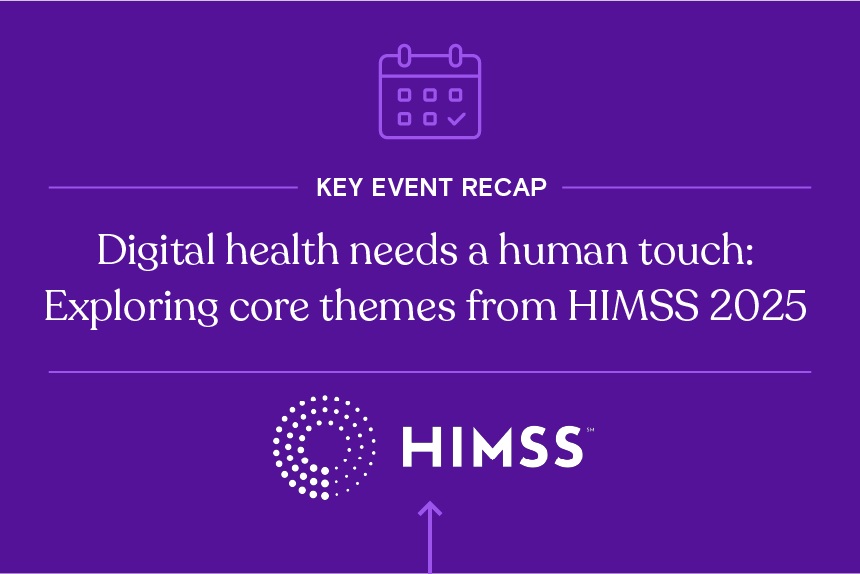Selling into the healthcare space is complicated work, particularly when targeting integrated delivery networks (IDNs). Each IDN has its own unique model, making it difficult for account executives and other sales personnel to identify which methods are most effective across the industry. In addition, some IDNs are represented by group purchasing organizations (GPOs) that negotiate prices for the health system. This adds another layer of complexity as GPOs can act as gatekeepers you’ll need to win over before reaching an individual IDN.
Altogether, companies that sell to IDNs certainly have their work cut out for them. But it is possible!
Data for selling to IDNs
To successfully sell to an IDN, you need detailed data on key factors like which types of sites of care comprise the IDN, the services it provides and procedures it performs, the patients it sees, and more. Digging deeper, you also need the right analytics to mine useful insights from the data, so you can equip your sales team with the information they need to pitch effectively, address pain points, and close more deals.
It can be challenging, but even the most complicated IDN or GPO can be successfully—and profitably—navigated. Let’s explore how sales teams can level up their performance and effectively sell to IDNs.
Understand the wheels that drive decision-making
Selling to an IDN is more complex and complicated than ever before. The face across the table might not be the person who will use your solution. Sales teams may need to wrestle with purchasing committees, risk managers, value analysis experts, and many other players who are involved in the decision to acquire your solution.
Not only are people with buying power busier than ever but there are more obstacles your sales team must overcome before they even set foot in a hospital. This makes the first interaction incredibly important—you might not get another chance.
To help your sales team put their best foot forward, they need the data and insights to understand what drives the IDN’s decision-making deeply. Gathering this data can be challenging; each IDN is different. The largest networks might manage hundreds of hospitals nationwide, while smaller networks will have just a few dozen or even fewer and operate only in certain regions. Some IDNs are only comprised of hospitals, while others cover the entire care continuum. Finally, how an IDN is integrated can determine how tightly aligned all facilities within the network are about patient care, purchasing decisions, administrative control, and more.
This makes the first interaction incredibly important—you might not get another chance.
Have a story to tell
Each hospital facility will have its own needs, challenges, and resources, making it harder for sales professionals to focus on the client’s most important goals. Sales personnel should have a clear plan in mind before they meet with physicians and hospital executives, to ensure success for everyone involved.
The table below illustrates just a few key metrics that give you insight into how an individual facility is performing at a clinical, operational, or financial level.
| Hospital name | HCAHPS star rating | All-cause hospital-wide readmission rate | NPR |
| St. Lukes University Hospital - Bethlehem | 3 | 15.4% | $8,944,229,494 |
| New York-Presbyterian Weill Cornell Medical Center | 3 | 13.9% | $7,691,623,214 |
| Tisch Hospital | 3 | 13.3% | $7,240,730,000 |
| Stanford Hospital - 300 Pasteur Dr | 4 | 14.9% | $6,761,246,237 |
| Cleveland Clinic Main Campus | 4 | 14.6% | $6,378,833,101 |
Fig. 1 Analysis of data from the Definitive Healthcare HospitalView product. Data was originally sourced from results published by the CMS. Accessed June 2024.
This information can help you better understand a hospital’s problems, goals, and priorities—all vital details you can use to craft a compelling value proposition. To elaborate:
HCAHPS star rating
This is a measurement of patient satisfaction with their hospital experience. A low score could indicate problems related to staff attentiveness and communication, how clean or noisy the facility is, how smooth the discharge process is, and other areas in need of improvement.
HCAHPS is quite important for hospitals, healthcare providers, and businesses in the healthcare industry, though its significance can vary depending on the specific entity.
For most hospitals, particularly those treating Medicare patients, HCAHPS is crucial. High scores can lead to financial benefits and attract patients.
While providers themselves aren’t directly mandated to participate, HCAHPS scores reflect on their performance within the hospital. Understanding patient experiences through HCAHPS can help them improve communication and bedside manners.
Finally, businesses that partner with hospitals, like patient transport services or medical equipment suppliers, might be indirectly impacted by a facility’s HCAHPS scores. A hospital with a high score could attract more patients, which could, in turn, increase demand for the business’s products or services. In some cases, a hospital might factor in HCAHPS scores when making decisions about partnering with new vendors. Companies with solutions that demonstrably improve patient experience could have an edge.
Readmission rate
A hospital’s readmission rate reveals the number of patients who return to the hospital shortly after a discharge, generally because the initial hospitalization wasn’t effective, or the discharge process wasn’t as smooth as it could have been.
Readmissions are expensive for both the healthcare system and the patients themselves. By reducing readmissions, hospitals can save money and patients avoid the physical and emotional stress of another hospitalization.
Analyzing readmission rates can help identify areas for improvement in patient care, discharge planning, and post-discharge support systems. This knowledge can be used to develop better strategies to reduce readmissions overall.
Net patient revenue
Net patient revenue (NPR) is the amount of money a hospital generates from patient services through commercial insurance, Medicaid, and Medicare—it is a standard metric for the financial performance of healthcare organizations.
By understanding an IDN’s NPR and which services are most profitable, you can gain a deeper insight into resource allocation, staffing decisions, pricing strategies with payors, opportunities for service line growth, possible mergers and acquisitions, future technology investments, and much more.
Optimize your sales pitch with healthcare commercial intelligence
Though there are many important metrics you can use, HCAHPS scores, readmission rate, and NPR are just three data points that can help you align your sales strategy with the goals of your prospects and improve your chances of success.
If you have a solution that can quantifiably help your client improve patient care quality, expand service offerings, and/or generate more revenue, then you have a story you can tell. Your solution’s value proposition is the core of your competitive advantage. It should clearly articulate what your product is, what its tangible benefits are, and why your product (or organization) is the best choice on the market.
For more on how to craft a compelling value proposition (and more best practices for using data in your sales strategy) read our how-to guide on selling effectively to healthcare facilities using the right data.
Learn more
In the right hands, the right data can be a powerful tool to help your sales team cut through the competition, be laser-focused on a prospect’s priorities and how decisions are made, and ultimately seal the deal.
Looking for more healthcare commercial intelligence and tools that can help you optimize your sales strategy? Start a free trial with Definitive Healthcare today.





